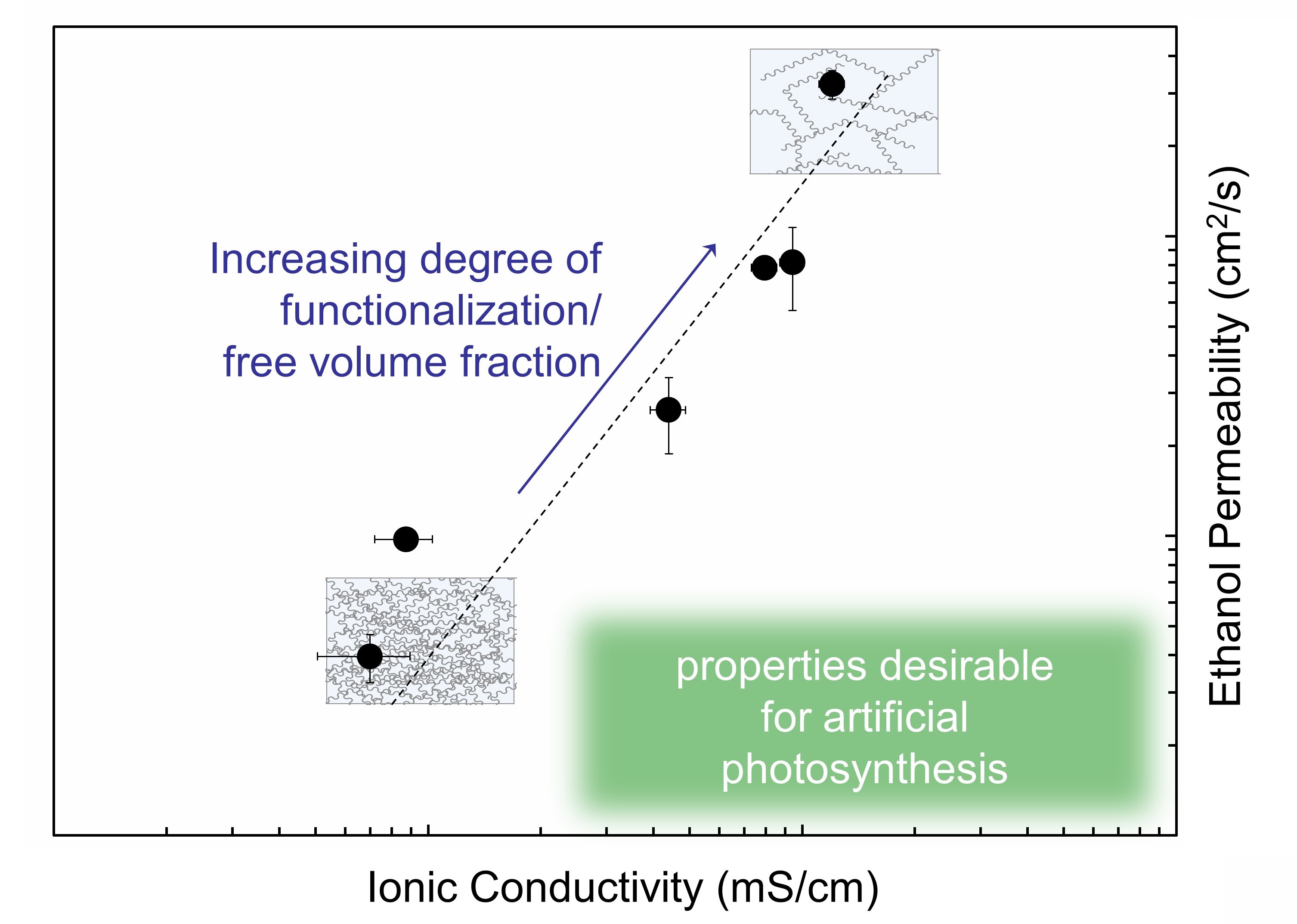The requirements of membranes utilized in artificial photosynthesis devices are multi-faceted and potentially incongruent. Artificial photosynthesis devices produce carbon-neutral liquid fuels (e.g., ethanol) from abundant resources, namely CO
2 and water, using energy harnessed from the sun. Polymer electrolyte membranes are incorporated into these devices to (1) mitigate the crossover of liquid fuel products that leads to product loss when the product is re-oxidized at the anode, (2) promote the transport of charge carriers between the anode and cathode, reducing the ohmic resistance, and (3) manage the difference in hydration states between the liquid-fed anode and gaseous-fed cathode, wherein dehydration at the cathode can lead to increases in ohmic resistance while flooding can lead to product distributions that disfavor liquid fuel products. It is important to consider these requirements together as many membranes demonstrate tradeoffs with respect to application requirements (e.g., permeability-selectivity tradeoff in gas separation and reverse osmosis). While ex situ studies have correlated polymer electrolyte membrane structure (i.e., free volume fraction) to either ionic conductivity or organic (neutral) solute permeation, few have correlated these two transport phenomena, as is relevant for artificial photosynthesis devices. Furthermore, most artificial photosynthesis studies have utilized commercial membranes, limiting correlation of device performance to explicit membrane physicochemical properties.
Herein, we utilize a polymer electrolyte membrane platform to explore the structure-transport relationships associated with the requirements for membranes utilized in artificial photosynthesis devices. Through systematic variation of the degree of functionalization of an imidazolium-functionalized poly(phenylene oxide) material platform, we fabricated membranes of varied water uptake and microstructure. By modifying the membraneâs microstructure, we adjusted the ethanol (a commonly reported CO2 reduction fuel product) permeation and bicarbonate (a common charge carrier) conductivity in the membranes. Membranes with a greater free volume fraction exhibited a higher bicarbonate conductivity and a higher ethanol permeability than those with a low free volume fraction. The trend of increasing ethanol permeability with increasing bicarbonate conductivity observed in this family of materials (Figure 1) presents a tradeoff in the membrane properties desirable for artificial photosynthesis (i.e., high charge carrier transport and low CO2 product crossover). While optimal membrane properties remain undefined due to the diversity of device types and operational characteristics (e.g., current density) reported, systematic control of the membrane physicochemical properties presented herein enables the study of a variety artificial photosynthesis devices operating over a range of conditions. Understanding the structure-transport relationships of the membrane could inform rational design of membranes for artificial photosynthesis and other electrochemical applications.
Figure 1. The trade-off between ionic conductivity and ethanol permeability in the imidazolium-functionalized poly(phenylene oxide) membrane platform.


